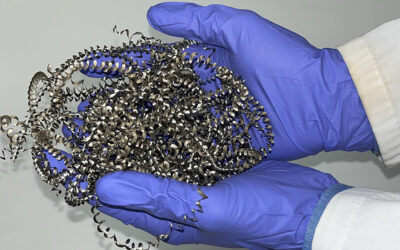One way to break the world’s addiction to petroleum is by replacing it with sustainable biomass: instead of wells, forests; instead of refineries, biorefineries. At the cutting edge of this technology is Sweden, where biomass has already surpassed oil to become the country’s largest energy source.
Now, researchers at Stockholm’s Royal Institute of Technology have found a way to further expand the productive possibilities of biorefineries, pioneering a polymerization process that converts the pulp and fragments released from many wood processing operations—their garbage, basically—into value-added products such as refined chemicals and materials. The research was reported by Ulrica Edlund and Ann-Christine Albertsson in the Journal of Polymer Science Part A: Polymer Chemistry.
The process of polymerization is known as single-electron-transfer living radical polymerization, or ‘SET-LRP’ for short. The process depends on hemicelluloses, molecules of great potential for chemical modification which are among the most abundant substances on earth due to their presence, along with cellulose, in the cell walls of almost all plants. Not only are hemicelluloses abundant in nature, but they are regularly released to process streams—basically thrown out by many wood process operations.
The process has been successfully used on three different hemicellulose types, including those from hardwood, softwood, and yeast. For instance, the major hemicellulose in spruce, pure acetylated galactoglucomannan, has been successfully converted to a vinyl/polysaccharide hybrid. Xylan was extracted from beech wood and birch, and mannan from yeast.
What is most heartening when considering the possibility of scaling up SET-LRP to commercial production, is the fact that the process performed as good as, if not better, in open air than it did in deoxygenated laboratory conditions. Also noteworthy was that SET-LRP worked without tedious freeze-pump-thawing, leading to a simplified process that is feasible for commercial production.
















